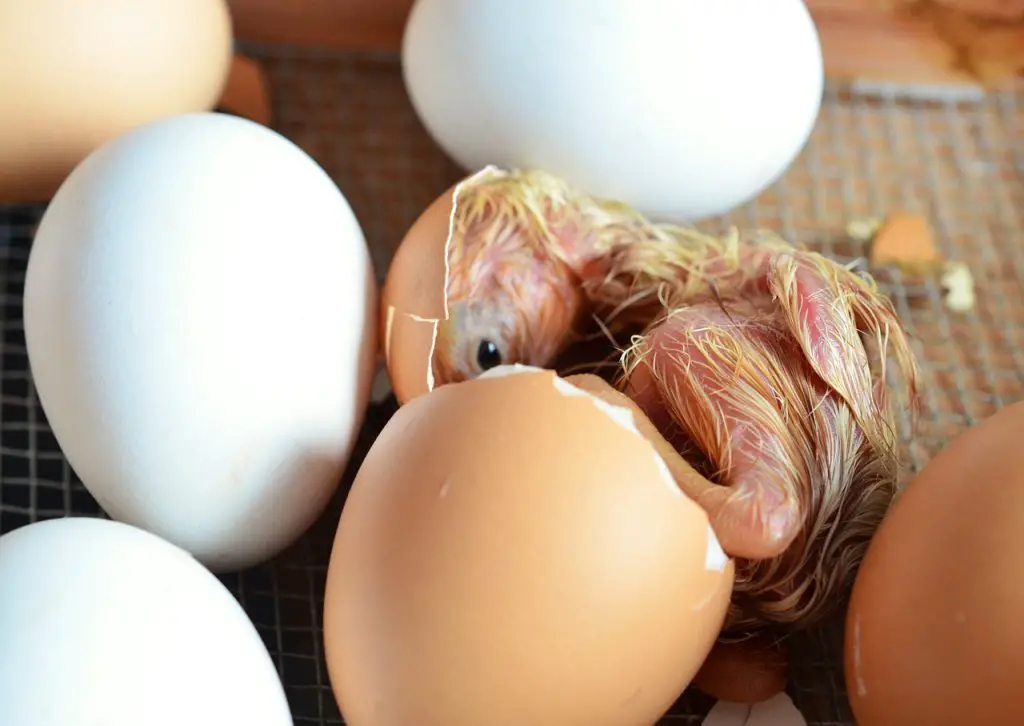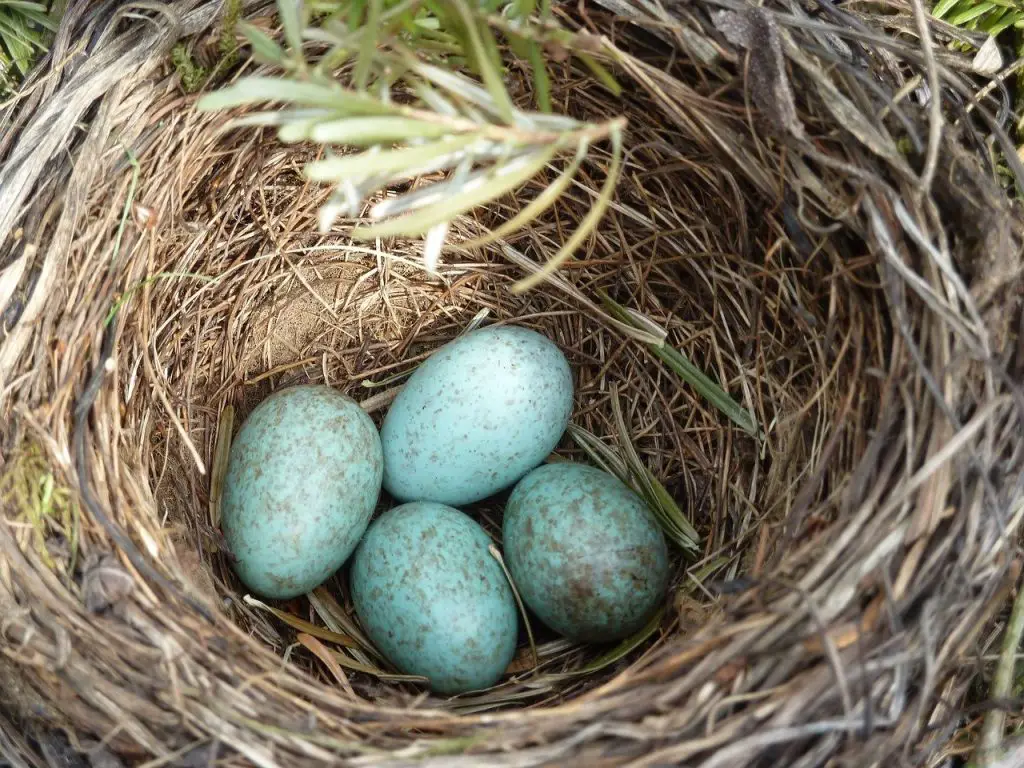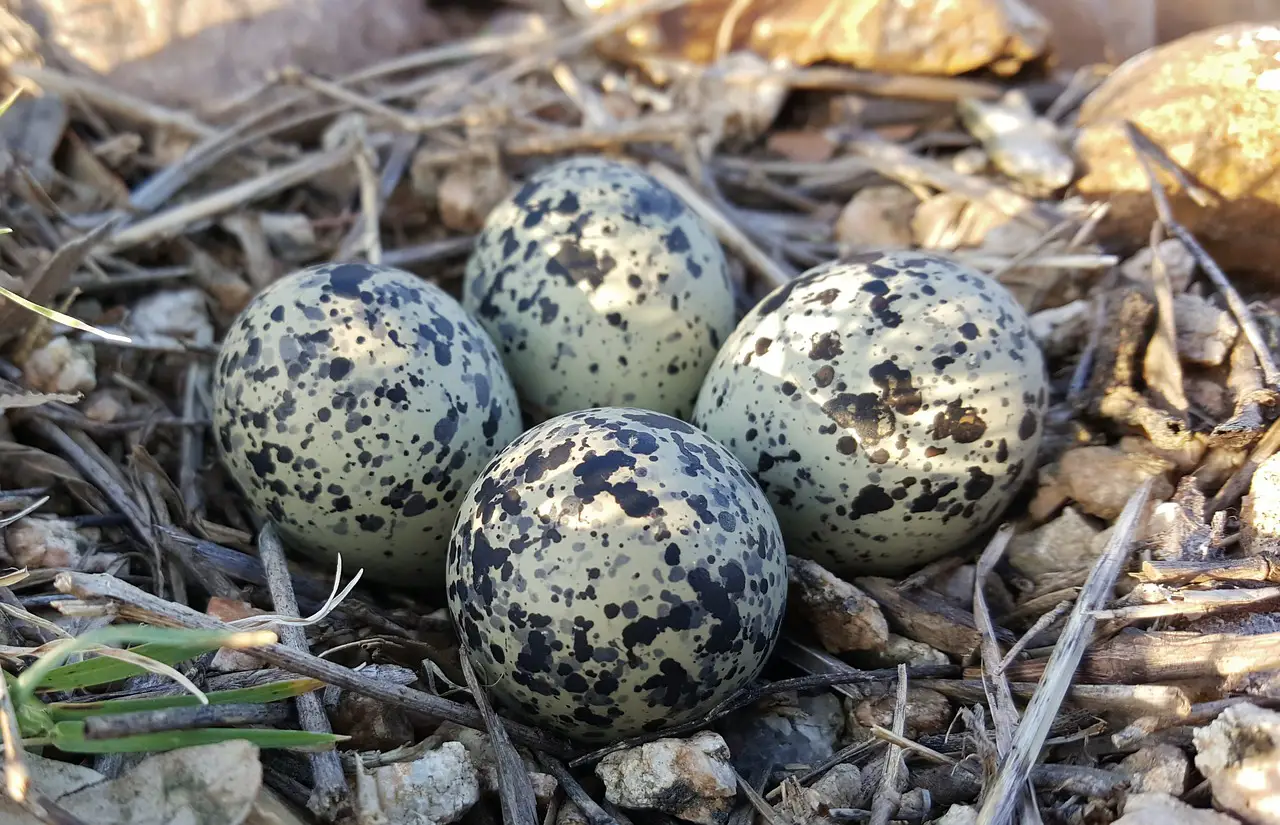All birds lay eggs that, if fertilized, contain their young which will grow inside the hard protective shell. There are several reasons why birds lay eggs and in this article, we look at some of these.
The primary reason birds lay eggs is that giving birth in this way suits their body structure. The respiratory system of birds does not allow much oxygen exchange to happen inside the mother. Without this oxygen exchange, the embryo would not healthily develop into a young chick. By laying eggs in a nest, the eggs get more oxygen, allowing them to grow fully.
Another reason scientists believe that birds lay eggs is to be able to fly without any problems. Birds are extremely light and without laying eggs, they could not fly with the added weight inside them.
Birds are animals but some people don’t realise why. Find out more here

Birds lay eggs of different sizes, shapes, and colours. Instead of giving birth to live offspring, birds lay eggs, allowing them to maintain their body’s metabolic and homeostatic processes.
Laying eggs does put birds in a vulnerable position within the ecosystem because their offspring are more susceptible to dangerous predators while in the nest.
The increased susceptibility to predators, greater exposure to environmental pathogens, and extreme weather conditions can affect the young bird’s overall health and safety.
Do you know where birds lay their eggs? Find out here
How do birds lay eggs?
An ovarian follicle is a fluid-filled sac that contains an immature egg. While ovulating, birds release a mature egg from the follicle.
Female birds ovulate follicles from their ovaries from time to time without mating with male species. Although some mammals have menstrual cycles, female birds do not.
Instead, ovulated follicles, also known as ova, pass through the body and come out surrounded by the shell.
Birds reproductive activity increases based on environmental factors, such as temperature, moisture, airspeed, and day length, to prepare for egg-laying. This is different to pet birds because they live in homes without exposing their bodies to environmental conditions.
Changes in temperature, light, air, and moisture do not affect their egg developing and laying capabilities. This means pet birds can ovulate and lay eggs year-round.
Let us now discuss the egg development process to understand how birds form eggs.
Do you know why bird eggs are different colours? Find out in this article I wrote
Egg Development Process
Unlike humans and other animals, birds have two ovaries that act as embryos. The left ovary develops when a bird matures while the right one regresses, meaning egg development occurs in the left oviduct.
The developing follicle on the ovary surface ruptures and passes into the oviduct, a funnel or tube-like structure in the female bird’s body. This is somewhat similar to the fallopian tube of a woman.
When these small cells in a clustered form pass down the oviduct, it forms a yolk coating for the developing embryo if the egg undergoes fertilization. The yolk contains an ovum that forms albumen or egg “white,” Next, the inner membrane develops, followed by the formation of the shell.
Bird eggs have hard and sturdy shells, thanks to the calcium content, proteins, and other nutrients. These elements are added to the eggshell in the last stage while the egg is in the uterus. The process occurs a few hours before the bird is ready to lay the egg.
The bird’s reproductive tract, urinary structures, urogenital parts, and gastrointestinal tract lead to the cloacal chamber.
For more information on how bird eggs form I have written an article here

Is it bad for birds to lay eggs?
Although laying eggs is discomforting and painful for some birds, this does not lead to severe complications because birds have naturally evolved to lay eggs. However, younger birds may find it challenging to lay eggs than older ones.
Although research studies do not support this belief, most poultry owners and pet bird raisers think that older birds have more convenience than younger ones when laying eggs. Many factors cause birds to experience discomfort and pain during the process. The most common cause is egg binding.
There are many ways that birds keep warm. Find out more here
Egg Binding
Egg binding occurs when a female bird finds it challenging to expel an egg from the body. Although most birds don’t have issues laying eggs, they may experience difficulty. Therefore, bird raisers and poultry owners must identify the problem early before it becomes a complication. The purpose is to resolve the issue on time.
Otherwise, the bird will experience severe discomfort and pain when laying the egg. Human females ovulate whether the male is present or not. Some bird species also ovulate in the absence of males. However, the primary difference is the microscopic egg in human females and the larger egg with an outer shell in birds.
Egg binding can occur for various reasons. For example, when birds don’t eat well or lack essential nutrients, such as proteins, minerals, and vitamins, including selenium, calcium, vitamin D, and vitamin E, they will find it challenging to expel the egg from their bodies.
These nutrients play a critical role in shelled egg formation. At the same time, these vitamins and minerals are beneficial for proper oviduct and uterine muscle contraction. Lacking these nutrients is directly proportional to ineffective muscle contraction, resulting in failure to lay the egg.
As a result, the bird forces its cloacal tube to pass the egg, causing severe discomfort and pain due to ruptured blood vessels and inflammation. Improper calcium levels in a bird’s body produce shell-less, soft-shelled, or deformed eggs.
This problem is common in pet birds and rarely occurs in wild species because they don’t have a sedentary lifestyle, lack of exercise, or improper diet.
Do you know how long birds incubate their eggs? Find out here.
Final Words
Egg laying is a natural and seasonal process in the wild and breeding birds. Female birds can lay eggs without a male’s presence, meaning they are infertile and won’t hatch even if they undergo the incubation process. Wild bird species are healthier and stronger with hard-shelled eggs.
On the other hand, pet birds are vulnerable to egg binding due to lack of exercise and improper diet. Unlike wild species, captive birds’ eggs do not hatch even if they complete the cycle. This causes birds to turn off hormonal changes, preventing them from laying eggs.
If you want to know why bird eggs have hard shells click here

